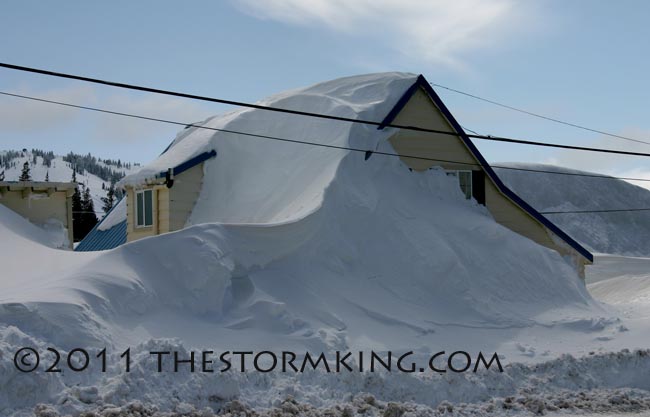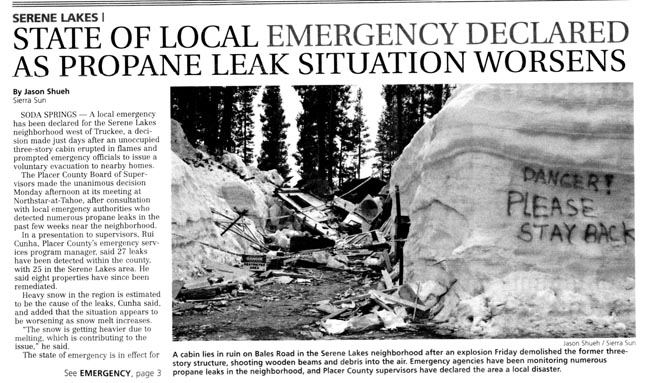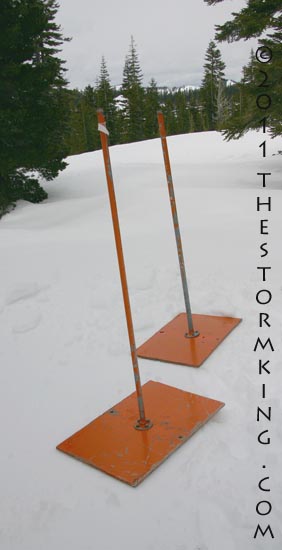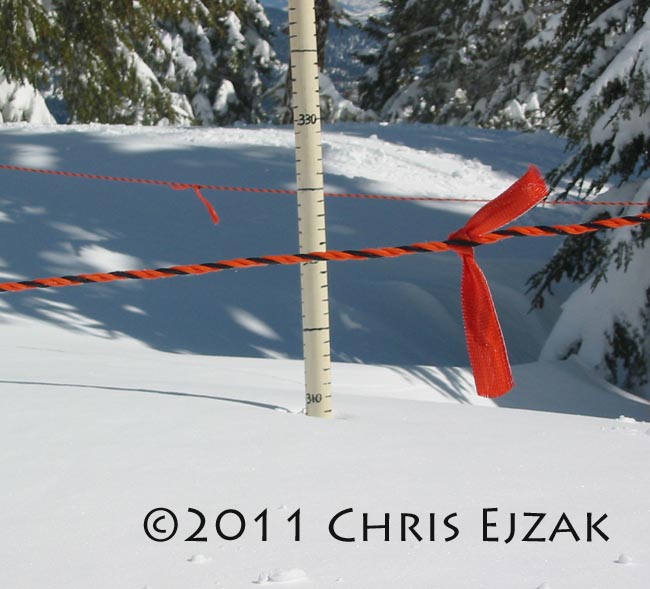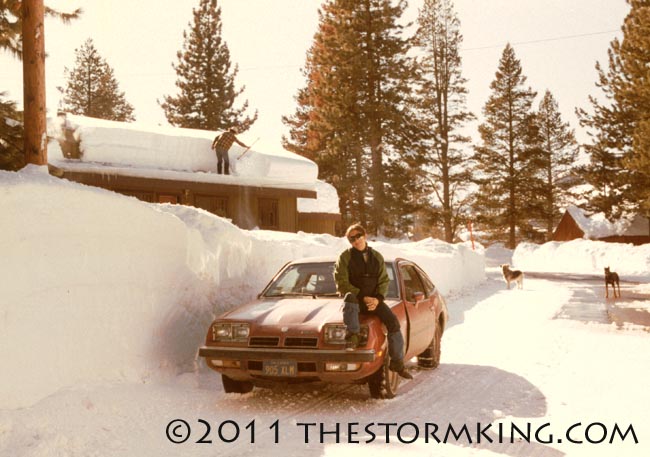|
Tahoe Nugget #205:
Measuring Tahoe Snowfall
April 25, 2011
The other day when Norm Sayler said, "This has been the worst winter ever," it caught my attention. As the former, longtime owner and operator of the Donner Ski Ranch near Donner Summit, Sayler has lived
in that neighborhood since the late 1950s and knows something about snow and tough winters.
We can forgive Norm for feeling cranky. His current business is contractual snow removal for most of the homes in Serene Lakes, one of the snowiest communities in the country. What made this March so
challenging for Sayler and his employees was the combination of wind-driven powder snow that piled into huge drifts over houses and driveways, and the overwhelming accumulation of snowfall that made many roads in
the Serene Lakes area nearly impassable until a rotary snowplow cleared them.
After the March 2011 storms, houses on Donner Summit were buried in drifts.
From Sayler's perspective, there was also a lack of available open space between many homes which made it
difficult to find areas to safely blow the snow. Of course, there was the issue of leaking propane tanks, which
should provoke a conversation about how best to mitigate that problem for future severe winters. There are lessons
to be learned here, but we'll have to wait to see if these concerns are addressed or just disappear with the melting snow.
Unprotected propane tanks were damaged by deep snow. One house exploded.
Water content (precipitation) is more important than snow depth, but it's the snow that makes winter sports magic. When powerful storms slam the mountains, everyone wants to know "how much pow?"
Cleaned snowboards wait for more powder at Homewood Mountain Resort.
The West is studded with hundreds of automatic precipitation gages that update water totals in real time using relay
technology, but because daily snowfall measurement sites in the upper elevations are relatively rare we generally
rely on regional ski resorts to tell us how much snow fell near the Sierra crest. Most professional ski patrol personnel take their work seriously, and despite adverse weather conditions they try to measure snow
accumulations in a consistent and accurate manner.
Alpine Meadows mid-mountain snowstake indicating a 309-inch (25.8 feet) snow depth on March 27, 2011.
It may seem simple, but measuring snowfall is a complex procedure and the National Weather Service has rules for
how it's done. At the Central Sierra Snow Laboratory near Donner Pass, new snow is measured twice a day using
a plastic–covered snowboard, about 10 inches square. The depth of new snow is probed with a rule at the four
corners of the board and averaged. The board is then cleaned off and positioned on the snowpack surface.
For Tahoe ski resorts which track accumulations by the foot or yard, a few inches here or there make no
meaningful difference, but not following the approved methodology can matter. On January 11-12, 1997, Montague, New York, located just east of Lake Ontario, reported a 77-inch snowfall in 24 hours, which set a new
North American record. The tally was disallowed, however, after the National Climate Extreme Committee determined that the total was achieved by adding six measurements together, two more than the maximum allowed
during any 24-hour period.
On January 5, 1982, the Tahoe region picked up more than five feet of snow overnight. Echo Summit near South Lake Tahoe set a second best record for North America with 67 inches in 24 hours.
North America's second greatest single day snowfall total occurred on January 4-5, 1982, at Echo Summit near South Lake Tahoe. Silver Lake, Colorado, holds first place with 76 inches on April 14-15, 1921.
|



